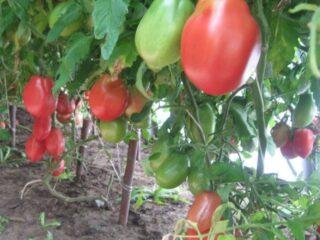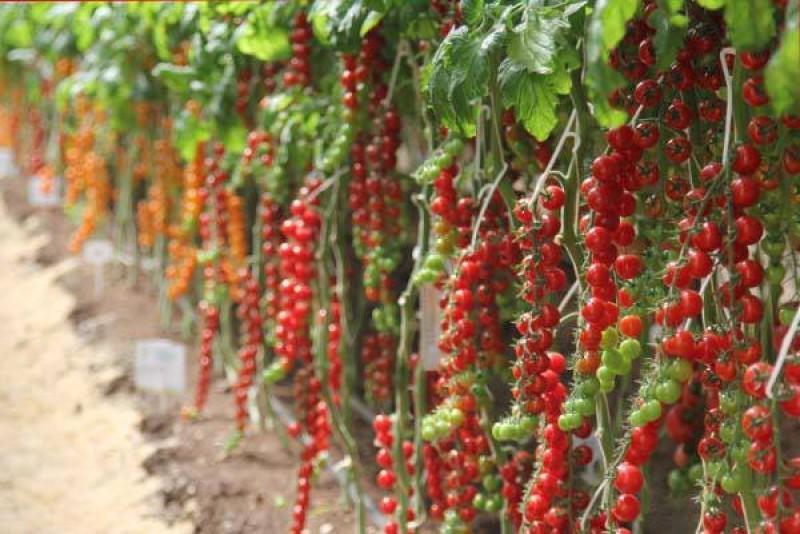Content
An interesting and unusual Havana cigar tomato attracts gardeners with its excellent taste and versatility. High yields, long-term storage, and good transportation made it possible in a short time to become one of the popular varieties among the population of the Russian Federation and neighboring countries.
Origin story
Havana cigar tomatoes were introduced in the 70s of the last century by US breeders. Their creator is Tom Waite, who crossed several varieties to obtain a hybrid that is unusual in shape and quality. The idea was a success, since the new variety was shaped like a cigar and had the desired qualities. This is where the name comes from – Havana cigar tomatoes.

Havana cigar seeds of Siberian selection are extremely successful
Scientists at the Siberian Garden agricultural firm continued breeding the variety. As a result, by 2007, tomato seeds were obtained under the same name, but suitable for growing anywhere in the Russian Federation.
Description of the tomato variety Havana cigar

Havana cigar of Siberian selection is an indeterminate plant
In a suitable environment, the liana-like bush reaches a height of 1.8–2.0 m. It has strong and flexible shoots, a powerful, developed rhizome that penetrates deeply into the ground. The foliage is average. The inflorescences are simple, the leaves are medium-sized, emerald green in color. Shoot formation is average.
The fruits are smooth, somewhat elongated, resembling a cigar. Ripe tomatoes weigh 100–150 g, sometimes 200 g. The length of one fruit reaches 18 cm. The cluster has 5–7 tomatoes of equal size, bright red color, smooth and shiny. Tomatoes have a dense skin; a small number of seeds are formed in the pulp. There is no green spot around the stalk. Tomatoes have a pleasant taste: rich, tender, sweet and sour.
Characteristics of the Havana Cigar tomato
To obtain a high yield, the formation of bushes with two stems is encouraged. During development, indeterminate bushes require reliable support and garter.
Ripening and yield
Medium early ripening tomato variety. The growing season lasts 110–115 days. The fruits ripen almost simultaneously. It is possible to remove brushes completely from the bush. Peak fruiting occurs in July-August.
This variety is productive. Up to 2 kg of fruits of the same size and shape are removed from a bush, and from 1 sq. m up to 10–12 kg of tomatoes.
The harvested fruits can withstand transportation without any problems, and are also well preserved for up to 1–1.5 months in a cool, darkened room.
Resistance to adverse factors
In addition, this unpretentious variety is resistant to temperature changes, fruit cracking, adverse weather conditions and difficult conditions of cool summer.
In what regions is it grown?
Recommended areas:
- Far Eastern;
- Western and Eastern Siberia;
- Ural region;
- North Caucasus;
- Middle and Lower Volga regions;
- Volgo-Vyatsky district;
- Ural;
- Central and Central Black Earth regions;
- Northern and Northwestern district.
Regardless of the growing region, the Havana Cigar tomato variety boasts consistently high yields in greenhouses and unprotected soil.
Methods of application
Universal tomatoes. Fully ripened fruits are good fresh. Since the shelf life of the crop is 5–10 days, such tomatoes need to be eaten quickly. You can use ripe fruits for juices, pastes, sauces, lecho. Tomatoes are added to cold dishes and hot snacks.
The removed brown fruits can easily remain until salted or pickled. For long-term storage, green tomatoes or milky ripeness are picked.

Due to the unusual shape of the fruit, the Havana cigar variety is used for non-standard and attractive decoration of dishes.
Advantages and disadvantages
Tomatoes are valued not only for their taste. They contain many useful elements: vitamins C, A, E, K, a powerful antioxidant (lycopene), potassium, magnesium, folic acid, iron.

The Havana cigar variety is interesting due to its unusual fruit shape.
Pros:
- high productivity;
- attractive presentation;
- crack resistance;
- accessible agricultural technology;
- keeping quality;
- good transportability;
- resistance to major diseases;
- decent taste and aroma.
Minuses:
- vulnerability to increased dampness;
- weak immunity.
Subtleties of landing
Havana cigar tomatoes are grown in seedlings.

Havana cigar seedlings are grown from seed material
Sow the seeds in February-March, about two months before transferring the sprouts to open ground (somewhere in May) in regions with a favorable climate or to a greenhouse (a little earlier).
Due to the differences in the geographical location of the regions, gardeners when transferring are guided by the following signs: absence of frost; air temperature is above 15°C during the day and 10°C at night.
The culture needs breathable, light, nutritious and slightly acidic soil. Bushes are comfortable in a warm place. The planting site should be well lit by sunlight.
For 1 sq. m, no more than three bushes are planted, provided they form two stems. It is permissible to place 4-5 bushes when maintaining one stem. The correct planting pattern is 40 cm by 50 cm. Leave up to half a meter between rows. The most common planting option: two rows in a checkerboard pattern.
Care instructions
When forming into two stems, after transferring the bushes into the ground, cut off the side shoots, except for the main stem and one stepson on the main trunk (under the first fruit cluster). The leaves under the fruit clusters are constantly being torn off. They no longer play a role in photosynthesis, but contribute to late blight infection.

During the entire fruiting period, remove excess shoots
Due to the fact that the Havana cigar tomato has unlimited growth, the crown of the main stem is pinched off a month before stable cold weather. This procedure will stop the bush from growing upward, which will allow the tomatoes to ripen.
An important component of care is tying up plants. The tomatoes will receive more oxygen and the light will increase. This means that the crop will suffer less and bear fruit well. Additionally, you will need tall metal and strong wooden stakes and coarse mesh.
For irrigation, use water heated to 22°C and above. Water regularly, being careful not to get it on the foliage and stems. To avoid drying out, the soil is mulched with cut young weeds or compost is used.
The variety is fed up to three times a season: 2 weeks after planting, during the flowering of the second cluster and after the first harvest. When choosing the composition and dose of fertilizers, they are guided by the condition of the soil and the appearance of the bushes.
Diseases and pests
Havana cigar tomatoes are resistant to major tomato diseases. If infection occurs, it is almost impossible to save the bushes. Regular prevention of late blight and alternaria (fungal diseases) gives good results. Spraying with fungicides, for example, “Ordan”, and a manganese solution is carried out until the first leaves appear and is stopped three weeks before harvesting.
Pest prevention:
- disinfection of greenhouses;
- annual replacement of the top soil layer;
- compliance with the schedule and order of planting, thinning;
- impeccable maintenance of the site, weed control, destruction of tops in the fall.
The best spraying option is to use a spray bottle, which makes it possible to thoroughly wet each leaf of the crop.
Conclusion
The Havana cigar tomato has an unusual appearance and pleasant taste of the fruit. Vegetables are healthy and used in various dishes. Preserved in all possible ways. Growing tomatoes is not difficult, and the result is a good harvest of tomatoes, the juiciness and sweetness of which will please your household and guests.








